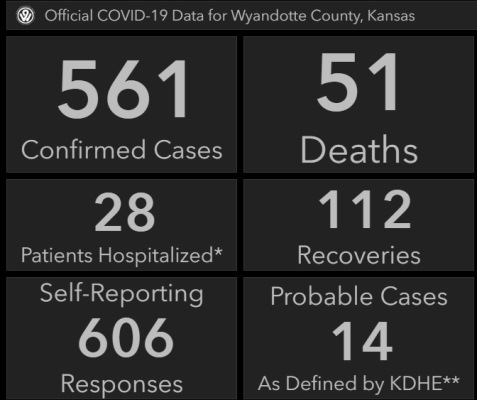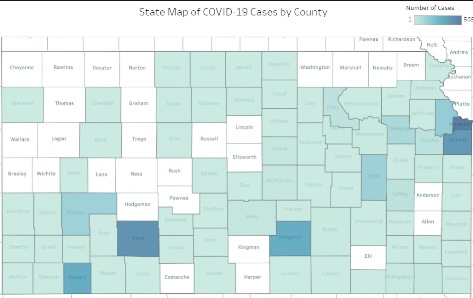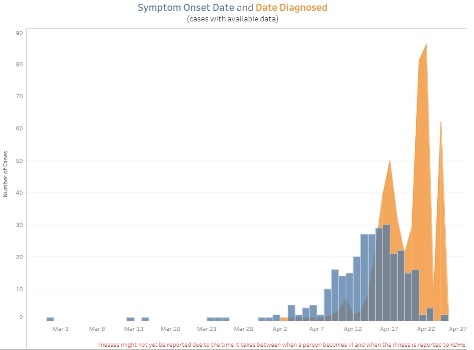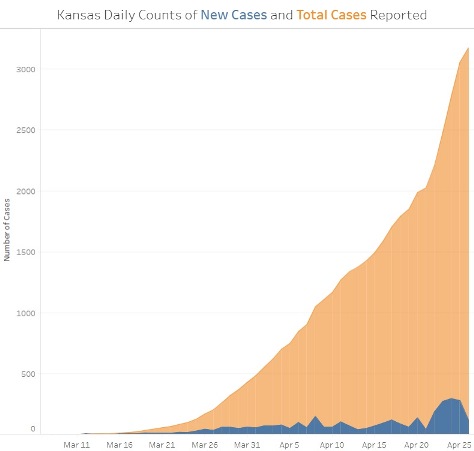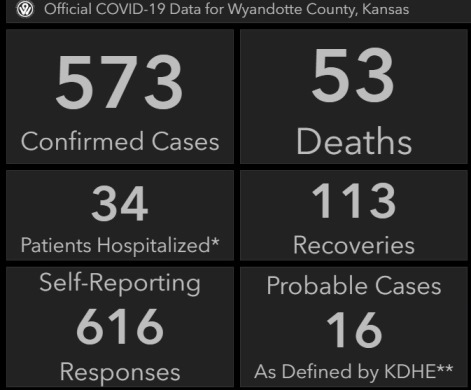
Wyandotte County reported 12 new COVID-19 cases at noon Monday, for a total of 573.
There were two more deaths reported in Wyandotte County since Sunday, according to the Unified Government COVID-19 webpage.
There has been no announcement as of Monday morning on when Kansas will end its stay-at-home order. The Kansas stay-at-home order expires on Sunday, May 3, but the order can be lengthened at the state or local level.
Gov. Laura Kelly said last week that she would announce plans for reopening this week. A court document filed Saturday in a case brought by two western Kansas churches pointed to May 4 as a date for the state easing some restrictions; however, that has not been announced at this time.
Kansas City, Missouri, officials previously have announced that they will not lift stay-at-home restrictions until May 15.
KU health officials discuss gradually bringing patients back for elective surgeries
As the University of Kansas Health System’s numbers of COVID-19 patients have remained in the 20s to 30s for the past few weeks, without a surge, health officials there are discussing a return to some hospital procedures and elective surgeries, with additional safety measures. There were about 25 COVID-19 patients at the health system on Sunday, doctors stated. There were 24 COVID-19 patients there on Monday, according to a spokesman.
Social distancing and other safety measures such as hygiene will be important for the health system, according to Dr. Steve Stites, chief medical officer at KU Health System. COVID-19 patients are in different areas from other patients.
Tammy Peterman, president of the Kansas Division, the University of Kansas Health System, at a news conference Monday said there were about 500 inpatients currently at the hospital, and normally there are 750 or more.
“There won’t be a switch that will be flipped, we know that, this will be a gradual process to bring additional patients back in,” Peterman said. “We know how to be safe, and we can do this.”
Staff and nurses have worked with patient safety every day, and will continue to do so, she said.
There is a new normal now, she said. Peterman said there will be additional procedures that will be put in place. There will be screeners as people come into the hospital, and there will be testing, social distancing and monitoring of personal protective equipment, she said.
Just as they prepared for the COVID-19 patients, they also are preparing for other patients who are in need of care, she said.
“We know that we put some of that care on pause, now some of those patients need to get back into the health system,” she said.
Bob Page, president and CEO of The University of Kansas Health System, said the health system has committed to its staff and employees for the last 21 years without any layoffs and furloughs, and it does not intend to do that now, either.
“We are committing to keep our staff whole, from a base pay perspective, through the end of June,” Page said.
The health system will bring more volume back, and will need the employees, he said. The health system also is allowing 50 employees to assist the state of Kansas in doing contact tracing of COVID-19 patients.
Peterman said the health system will be very cautious about reopening, and will work with physicians, who will determine what patients need to get back in first. The health system plans to test patients before bringing them in for surgery and procedures.
Some of the staff is being redeployed to areas where work needs to be done, she said.
Dr. Stites said there have been recent reports of increased deaths among patients who did not come in for treatment for heart attacks and strokes. Some of the patients may have been afraid of hospitals, but he said KU Health System is not seeing any patient-to-patient or health care worker-to-patient transfer of COVID-19.
Patients coming into the hospital will be tested first for COVID-19, he said, and they are working hard to make sure patients stay safe.
Dr. Dana Hawkinson, medical director of infection prevention and control at the University of Kansas Health System, said the health system keeps up with guidance from the CDC and KDHE. They monitor the amount of personal protective equipment that is on hand to make sure health care workers have enough, he said. They test, identify positive COVID-19 cases and make sure those persons are put into isolation, following policies, he said.
Dr. Stites said with operations, there is discussion about using regional anesthetic blocks, as general anesthesia is in short supply through the nation. There also are social distancing rules now in place.
Peterman said the hospital will still be closed to visitors, and they will continue to try to connect visitors to their families through social media such as Zoom calls.
Telehealth will continue to be used, according to the officials.
Page said it remains very important for years that no patient be harmed when they come into the hospital, and they have not let up on the zero harm monitoring.
Dr. Stites said whenever society reopens, unless there is an effective therapy or vaccine, there will be a risk of increased spread of the disease and bringing about another surge.
The way to avoid that is to have widespread testing for persons who are sick to remain at home, and they don’t have that yet, he said.
From a purely public health standpoint, the answer of when the safest time to reopen society would be when there is a vaccine and therapy, or adequate ability to test for who’s got it, and contact tracing for those who have it, he said. Now they can do increasing contact tracing, but there aren’t enough tests to do community-wide testing, he said.
What they’re currently also seeing is a need for people to return to their jobs, and there is a risk inherent in it, he said. They have had success with social distancing, flattening the curve here.
They live a little bit in fear of another surge, as what happened in New York City, he said.
“What we have to do when we reopen is practice the same things we’ve been doing all along,” Dr. Stites said.
When society reopens, people will need to maintain six feet distance from each other, wash their hands, not touch their faces, wear a mask if they are in contact with others and stay home when sick, Dr. Stites said.
“We can’t let up on the practices that we know have really worked,” Peterman said.
To view the KU Health System news conference, visit https://www.facebook.com/kuhospital/videos/1130729253929843/?__tn__=%2Cd%2CP-R&eid=ARBZnJ8AupbetpZmfu9YNn2Q0l6JM5lPyL-ud8sOVymB1jcQQpMreHSr9H88sSq5uqo1cw9EoFfp0WUi.
The UG’s COVID-19 webpage is at https://alpha.wycokck.org/Coronavirus-COVID-19-Information.
The Kansas COVID-19 resource page is at https://govstatus.egov.com/coronavirus
Information from the CDC is at https://www.cdc.gov/coronavirus/2019-nCoV/.

